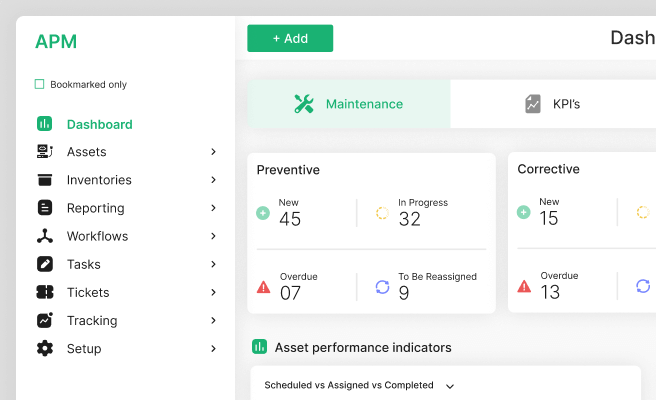Experience Design
<p>Experience design is a multidisciplinary approach focusing on creating meaningful and engaging interactions for users within a digital or physical product. It integrates various aspects of user experience (UX) and user interface (UI) design to ensure the end-users find value and satisfaction in their interactions with a product. This concept is particularly vital in the climate-tech industry, where designing intuitive and impactful interfaces can significantly drive user engagement and adoption.</p>
<p>Experience design stems from the broader field of design thinking, which emphasizes empathy, ideation, and iterative prototyping. It combines principles from psychology, anthropology, and design to craft experiences that resonate with users on an emotional and functional level. The ultimate goal is to align the user's needs and the business objectives seamlessly.</p>
<h2 id="importance-of-experience-design">Importance of Experience Design</h2>
<p>Experience design is crucial for several reasons. First, it enhances user satisfaction by making interactions more intuitive and enjoyable. In sectors like climate tech, where products can be complex, clear and engaging design can reduce friction and improve user adoption. For example, a well-designed dashboard for a carbon footprint tracking app can make it easier for users to understand and act on their data.</p>
<p>Moreover, experience design can build brand loyalty. Users are more likely to return to and recommend products that offer a positive experience. This is particularly important for startups and smaller companies looking to establish a strong market presence. By focusing on experience design, organizations can differentiate themselves from competitors and create a loyal user base.</p>
<h3 id="components-of-experience-design">Components of Experience Design</h3>
<p>Experience design involves various components that work together to create a cohesive user experience:</p>
<ul>
<li><strong>Usability:</strong> Ensuring that the product is easy to use and navigate.</li>
<li><strong>Accessibility:</strong> Making the product usable for people with a range of abilities.</li>
<li><strong>Desirability:</strong> Creating an appealing and engaging design that attracts users.</li>
<li><strong>Value:</strong> Providing meaningful benefits to the user through the product.</li>
<li><strong>Findability:</strong> Making sure users can easily find information and features within the product.</li>
</ul>
<h3 id="real-world-examples-in-climate-tech">Real-World Examples in Climate Tech</h3>
<p>Experience design plays a pivotal role in the success of various climate-tech applications. For instance:</p>
<p><a href="https://www.climatiq.io" style="color: #2896FF; text-decoration: underline;">Climatiq</a> offers a platform for tracking and reducing carbon emissions. Their user-friendly interface and clear data visualization help users easily understand their impact and take actionable steps.</p>
<p><a href="https://www.jupiterintel.com" style="color: #2896FF; text-decoration: underline;">Jupiter Intelligence</a> provides predictive data and analytics for climate risk management. Their intuitive design ensures complex data is presented in a digestible format, aiding decision-makers in effectively planning and mitigating risks.</p>
<h2 id="challenges-in-experience-design">Challenges in Experience Design</h2>
<p>Despite its benefits, experience design comes with its own set of challenges:</p>
<ul>
<li><strong>Balancing Functionality and Aesthetics:</strong> Ensuring the product is both functional and visually appealing can be tricky. Overemphasizing one can compromise the other.</li>
<li><strong>Understanding User Needs:</strong> Accurately identifying and addressing the diverse needs of users requires extensive research and continuous feedback loops.</li>
<li><strong>Ensuring Consistency:</strong> Maintaining a consistent user experience across different platforms and devices can be challenging but is essential for user satisfaction.</li>
</ul>
<h3 id="overcoming-challenges">Overcoming Challenges</h3>
<p>To tackle these challenges, designers can employ several strategies:</p>
<ul>
<li><strong>User Research:</strong> Conducting thorough user research helps in understanding the target audience’s needs and preferences. Tools like <a href="https://www.usertesting.com" style="color: #2896FF; text-decoration: underline;">UserTesting</a> can facilitate this process.</li>
<li><strong>Prototyping and Testing:</strong> Creating prototypes and testing them with real users allows designers to identify and rectify issues early in the design process.</li>
<li><strong>Consistent Design Language:</strong> Using a consistent design language and guidelines ensures uniformity across different elements and platforms. Design systems like <a href="https://material.io/design" style="color: #2896FF; text-decoration: underline;">Material Design</a> by Google can be a valuable resource.</li>
</ul>
<h2 id="implementing-experience-design">Implementing Experience Design</h2>
<p>Implementing experience design requires a collaborative approach, involving various stakeholders from the early stages of product development. Here are some actionable steps:</p>
<p><strong>1. Define Clear Objectives:</strong> Start by outlining the goals of the product and the problems it aims to solve.</p>
<p><strong>2. Conduct User Research:</strong> Gather insights from potential users to understand their needs and pain points.</p>
<p><strong>3. Create User Personas:</strong> Develop detailed user personas to guide the design process and ensure it aligns with user expectations.</p>
<p><strong>4. Develop Wireframes and Prototypes:</strong> Create wireframes and interactive prototypes to visualize the user journey and test functionality.</p>
<p><strong>5. Test and Iterate:</strong> Conduct usability testing to identify issues and iterate on the design based on feedback.</p>
<p><strong>6. Implement and Monitor:</strong> Once the design is finalized, implement it and continuously monitor user feedback to make necessary improvements.</p>
<h2 id="conclusion">Conclusion</h2>
<p>Experience design is a vital component in creating digital products that resonate with users and drive engagement. By focusing on usability, accessibility, desirability, value, and findability, designers can create products that not only meet user needs but also support business objectives. In the climate-tech sector, innovative experience design can play a significant role in enhancing user interaction and promoting sustainable practices.</p>
<p>We’re using the power of design to increase the adoption of climate technologies and innovation. View our work in climate to know more on how we can support your vision. <a href="https://www.whatifdesign.co/climate" style="color:#2896FF; text-decoration:underline;">View our climate projects</a>.</p> <p>Increase user engagement that converts your demos into sales. Optimise your UX strategies with our audits.
<p>Fill out the <a href="https://tally.so/r/n97pxQ" style="color:#2896FF; text-decoration:underline;">UX Audit form</a> to get started. Ready to discuss your needs? <a href="https://cal.com/akhilak/what-if-design?duration=25" style="color:#2896FF; text-decoration:underline;">Book a consultation call</a> with us today.</p></p>

Let's scale your impact with great design.
Free consultation, no sales pitch
Thank you! Your submission has been received!
Oops! Something went wrong while submitting the form.
Let’s talk
Nothing great is built alone.
Let’s connect about your vision, our work and how we can collaborate.
Get in touch

